[Paper Review] Selective Refinement Network for High Performance Face Detection
Selective Refinement Network for High Performance Face Detection
Chi, Cheng, et al. “Selective refinement network for high performance face detection.” Proceedings of the AAAI Conference on Artificial Intelligence. Vol. 33. 2019.
Abstract
- Selective Refinement Network(SRN) : 새로운 two-step classification과 regression 연산을 선택적으로 수행 (single-shot face detector)
false positives 감소, location 정확도 향상
- The Selective Two-step Classification(STC) module : low-level detection layers에서 많은 simple negative anchors를 걸러냄
다음 classifier의 search space를 줄이기 위해
- The Selective Two-step Regression(STR) module : high-level detection layers에서 anchors의 locations과 sizes를 조정
다음 regressor에 좋은 initialization을 제공하기 위해
- Receptive Field Enhancement(RFE) block : 더 다양한 receptive field 제공
몇몇 극단적인 경우(extreme poses)에서 faces를 더 잘 예측할 수 있도록 도움
- SRN detector는 SOTA 달성 : AFW, PASCAL face, FDDB, WIDER FACE datasets
Introduction
- face detection 성능을 올리기 위해 다루어야 할 2가지 문제
1) recall efficiency : high recall rate에서 false positive의 수를 줄일 필요가 있음
RetinaNet의 그래프를 보면, recall rate가 90% 일 때, precision이 약 50% (low recall efficiency)
기존의 방식들은 high recall rate에 중점을 두고, 그로 인한 다량의 false positives 문제를 무시함
2) location accuracy : bounding box의 정확도가 향상될 필요가 있음
IoU threshold가 커질수록 AP의 값이 상당히 떨어짐
bounding box 정확도 향상을 위해 multi-step regression이 적용되었으나, 이는 face detection에서 역효과를 냄
- Main contributions
1) STC module 제안 : classification search space를 줄이기 위해 low-level layers에서 많은 simple negative samples을 걸러냄
2) STR module 제안 : 다음 regressor에게 좋은 initialization을 제공하기 위해 high-level layers에서 anchors의 위치와 사이즈 조정
3) RFE module 도입 : extreme-pose-faces를 예측하기 위해 더 다양한 receptive fields를 제공
4) AFW, PASCAL face, FDDB, WIDER FACE datasets에서 SOTA 달성
Selective Refinement Network
- Backbone : ResNet-50
6-level feature pyramid 구조
C2, C3, C4, C5 : 4개의 residual block으로부터 추출한 feature maps
C5, C6 : 2개의 단순한 down-sample 3x3 convolution layers에서 추출한 feature maps
P2, P3, P4, P5는 C2, C3, C4, C5와 연결된 구조 : bottom-top and top-down (FPN 구조)
P6, P7은 단순한 down-sample 3x3 convolution layers에서 추출한 feature maps
- Dedicated Modules
The STC module : C2, C3, C4와 P2, P3, P4를 선택하여 수행
The STR module : C5, C6, C7와 P5, P6, P7를 선택하여 수행
The RFE module : classification과 location을 예측하는데 사용되는 features의 receptive field를 풍부하게 함
- Anchor Design
모든 pyramid level에 2개의 anchors scale과 1개의 aspect ratio 사용
scale range : 8-362 pixels을 커버함
- Loss function
deep architecture의 끝에 hybrid loss를 추가
focal loss와 smooth L1 loss의 장점을 둘 다 얻음
hard training examples에 더 focus를 두고 학습을 진행하며, 더 좋은 regression 결과를 학습
- Selective Two-Step Classification
기존의 문제점 : anchor-based detector에서 작은 object를 detection하기 위해서는 작은 anchor를 image 전체에 tiling -> few positive, plenty of negative (class imbalance)
anchor-based face detector에서 classifier의 search space를 줄이기 위한 방식이 필요함
false positives를 줄이기 위한 two-step classification 방식
Selective Two-Step Classification
상위 pyramid level(P5,P6,P7)에서는 two-step classification이 불필요함
anchor의 수가 많지 않고 classification loss가 비교적 쉽기 때문에, 적용될 필요가 없고 적용시 계산비용을 늘어나게 함
하위 pyramid level(P2,P3,P4)에서는 two-step classification이 필요함
약 88.9% samples을 차지하며, 적절한 features(positive samples)가 부족
class imbalance 문제를 완화시키고 search space를 줄임
STC module은 positive/negative sample ratio를 증가시킴 (약 38배)
samples의 완전한 사용을 위해 각 step에 focal loss 사용
각 step에서 classification module 공유 (same task)
- Selective Two-Step Regression
one-step regression의 문제점 : 최근 one-stage detector는 one-step regression 방식을 이용하는데, 이는 어려운 장면에서 부정확함
multi-step regression의 문제점 : cascade 구조에서 multi-step regression 방식을 이용하는 것은 오히려 역효과를 냄
Selective Two-Step Regression
low pyramid levels에서 two-step regression을 이용하면 성능이 저하됨
1) small anchors to perform two-step regression (너무 많은 small anchor)
2) 학습과정에서 network가 어려운 regression task에 집중하면서 큰 regression loss의 원인이 되고, 더 중요한 classification task를 방해함
3개의 higher pyramid levels에서 two-step regression 진행
3개의 higher pyramid levels에서 large face의 features를 충분히 활용하여 더 정확한 bounding boxes의 위치를 찾고, 3개의 lower pyramid levels이 classification task에 더 집중할 수 있도록 만듦
the smooth L1 loss 사용
- Receptive Field Enhancement
많은 detection networks는 ResNet이나 VGGNet을 feature extraction module로 사용함
문제점 : 하나의 receptive field를 갖기 때문에, 다른 비율을 가진 object를 찾는 것이 힘듦
Receptive Field Enhancement (RFE) : classes와 위치를 예측하기 전에 feature의 receptive field를 다양하게 만들어 줌
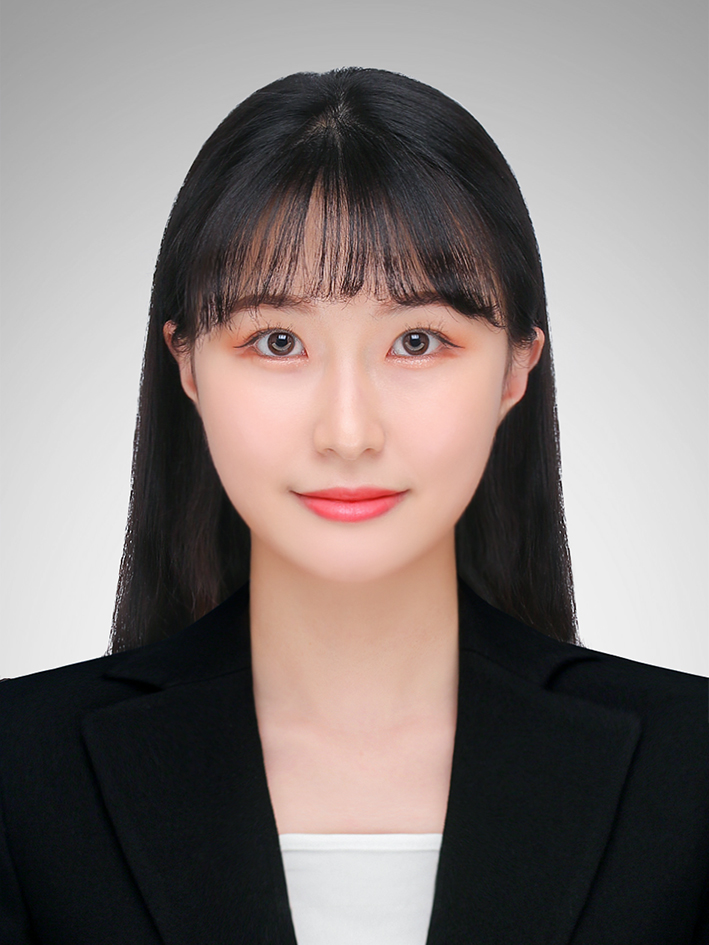
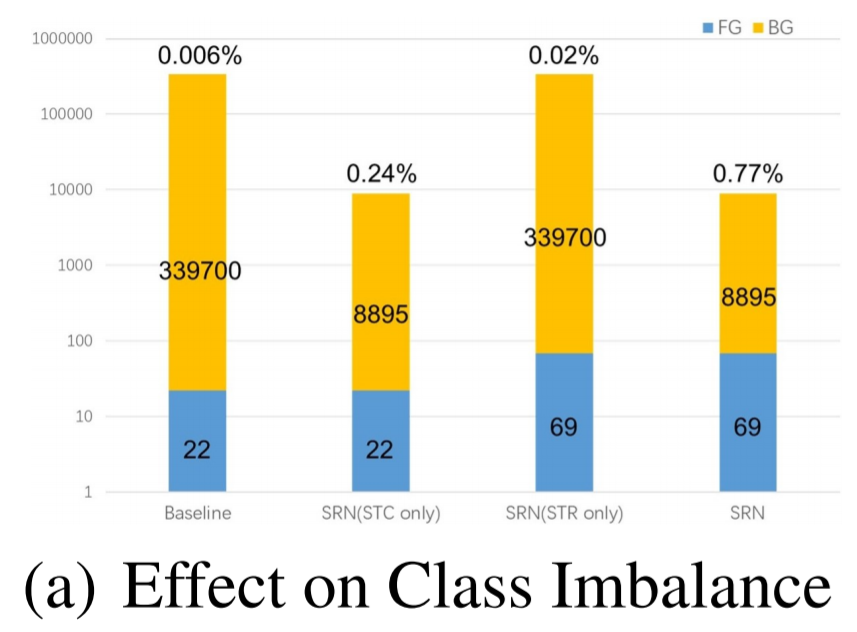
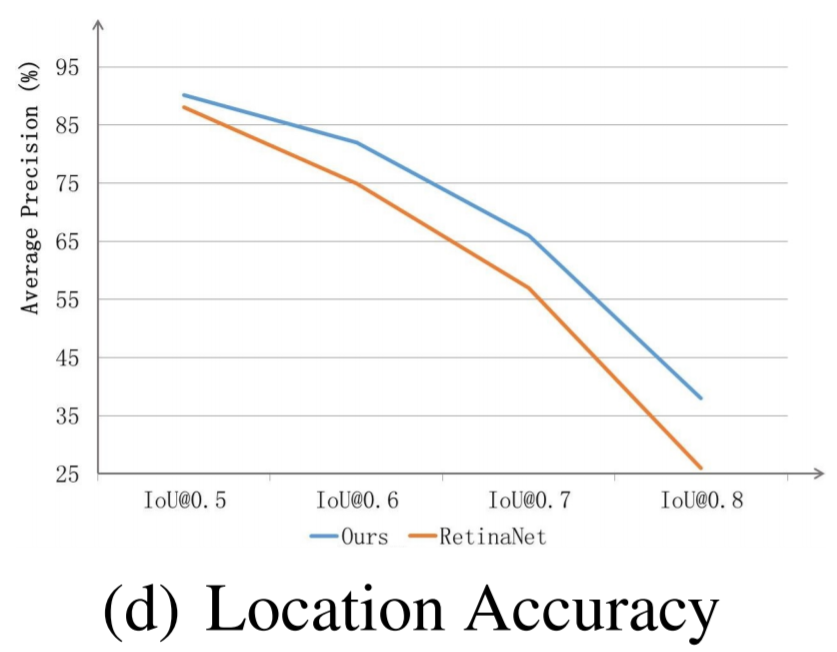


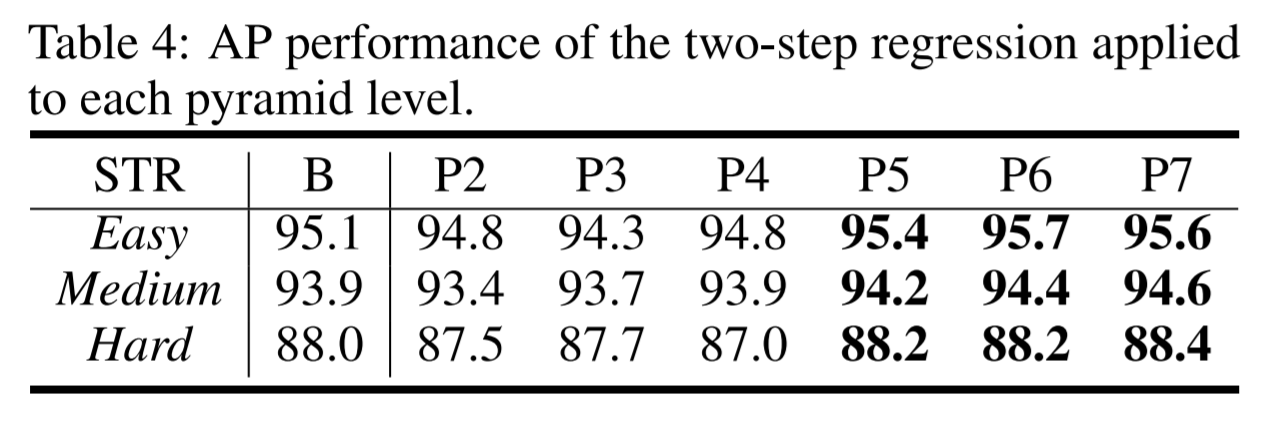

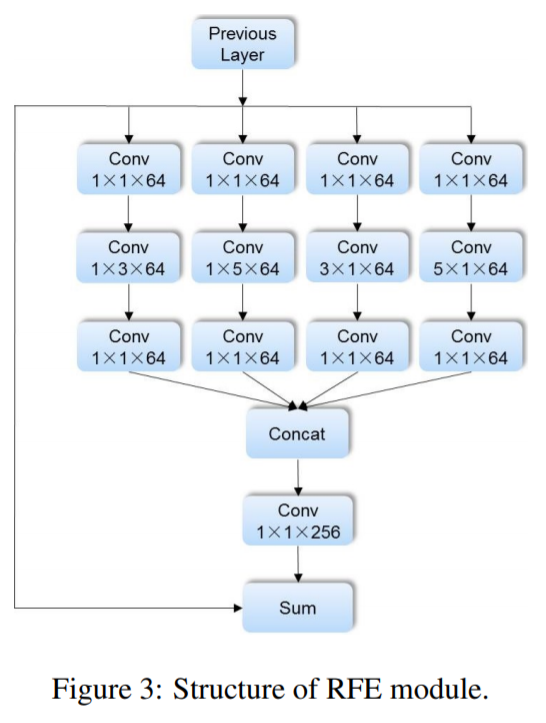
Leave a comment